|
|
|
|
|
|
I agree with Sharon. Too many people dress up to go out so total strangers are impressed but never bother to impress their own partners who deserve it the most?
lucky you to have a partner who cares enough to dress up for you.
|
| |
|
|
|
|
|
|
|
|
|
Never understood why people mask and paint around trim, you can always see it and it takes longer to mask it off then flat around it etc than to take it off anyway. Ooooh...dunno about speed. Once helped a mate mask/prep/spray a full s3 xj6 (when they were worth £2.50 and a bag of jelly babies) in an evening. Looked ok the next morning when unmasked. Doubt it looked like that for toooo long though. |
| |
'80 s1 924 turbo..hibernating
'80 golf gli cabriolet...doing impression of a skip
'97 pug 106 commuter...continuing cheapness making me smile!
firm believer in the k.i.s.s and f.i.s.h principles.
|
|
|
|
|
|
|
More progress 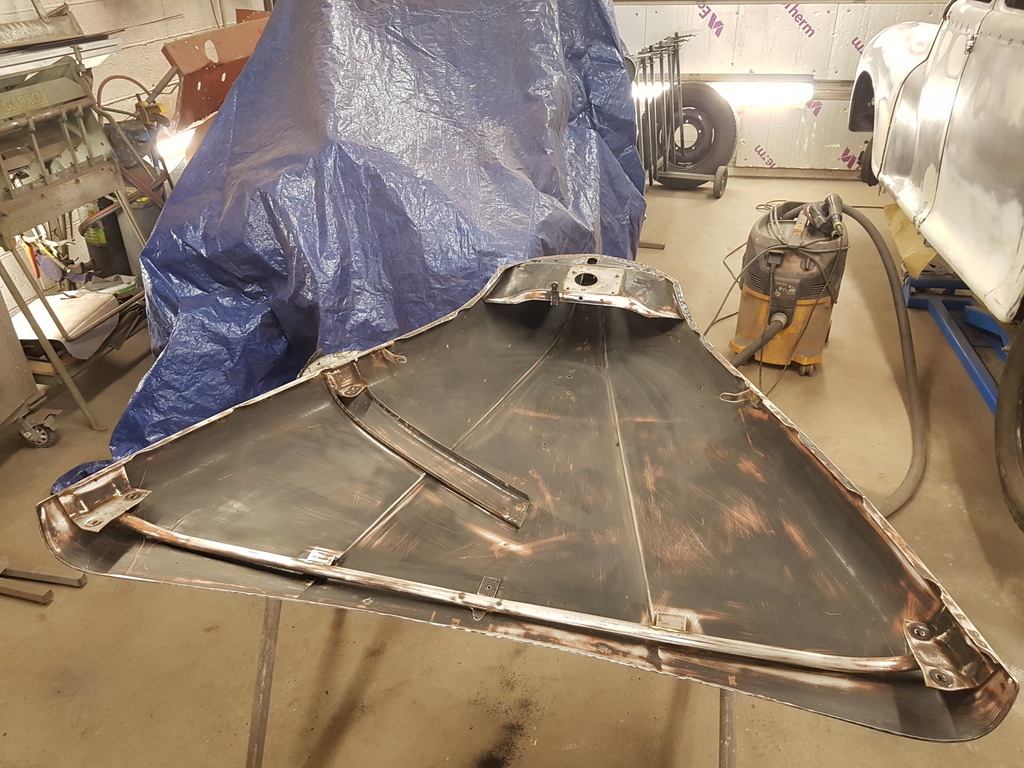 Gave the underside of the bonnet a good rub over / clean up 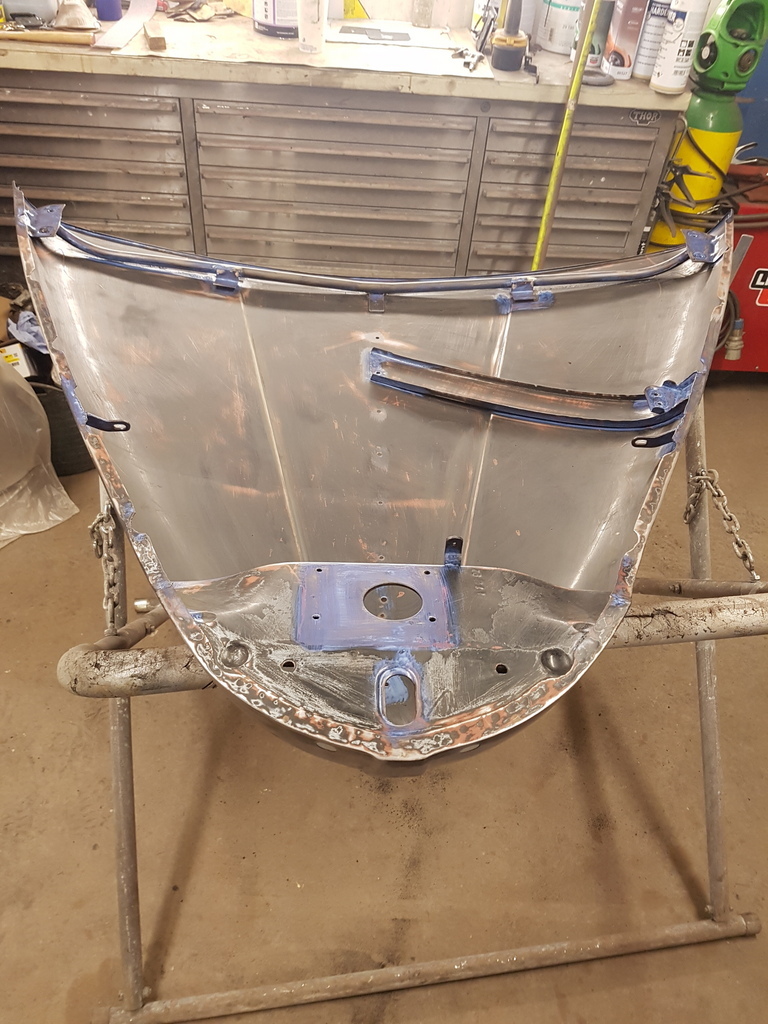 Has always the rust effected areas were treated with Hydrate 80  Completed the profiles on the NSF wing 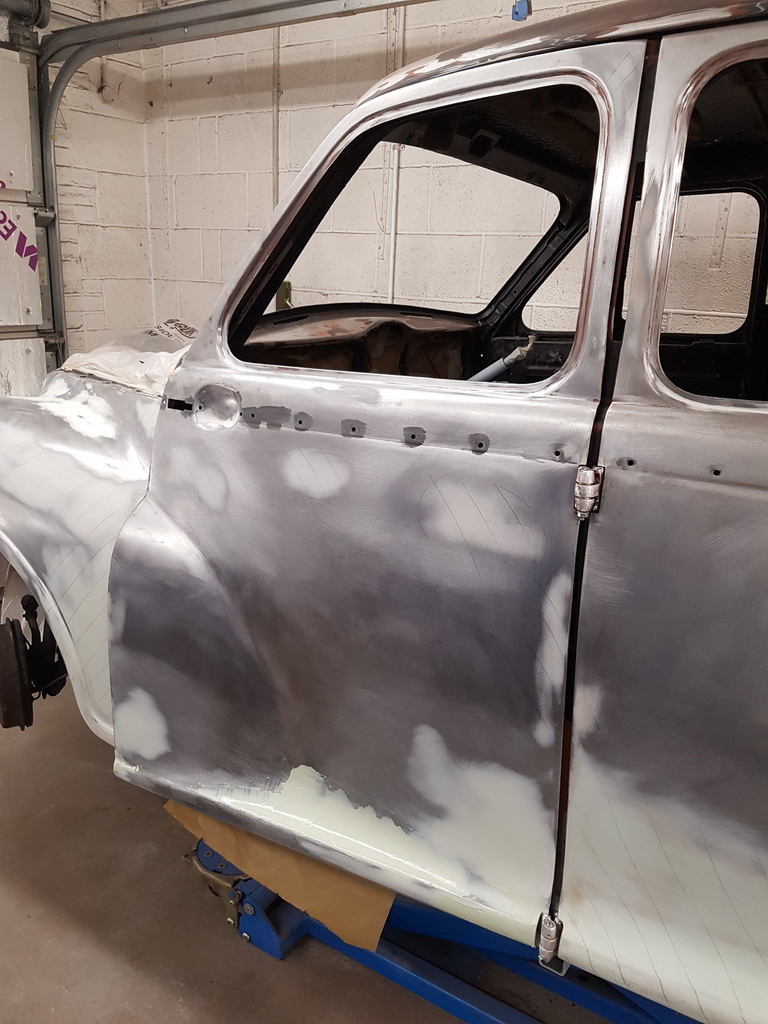 And the door followed shortly afterwards 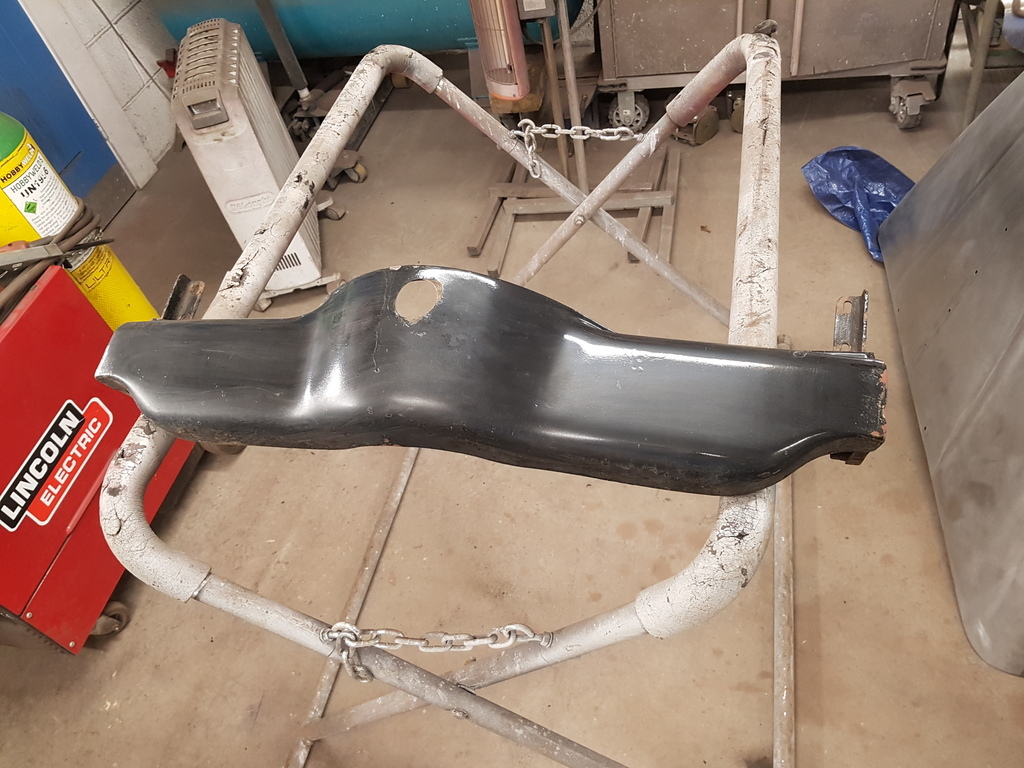 Front panel had received several coats of paint in its life but it was starting to shell off in some areas 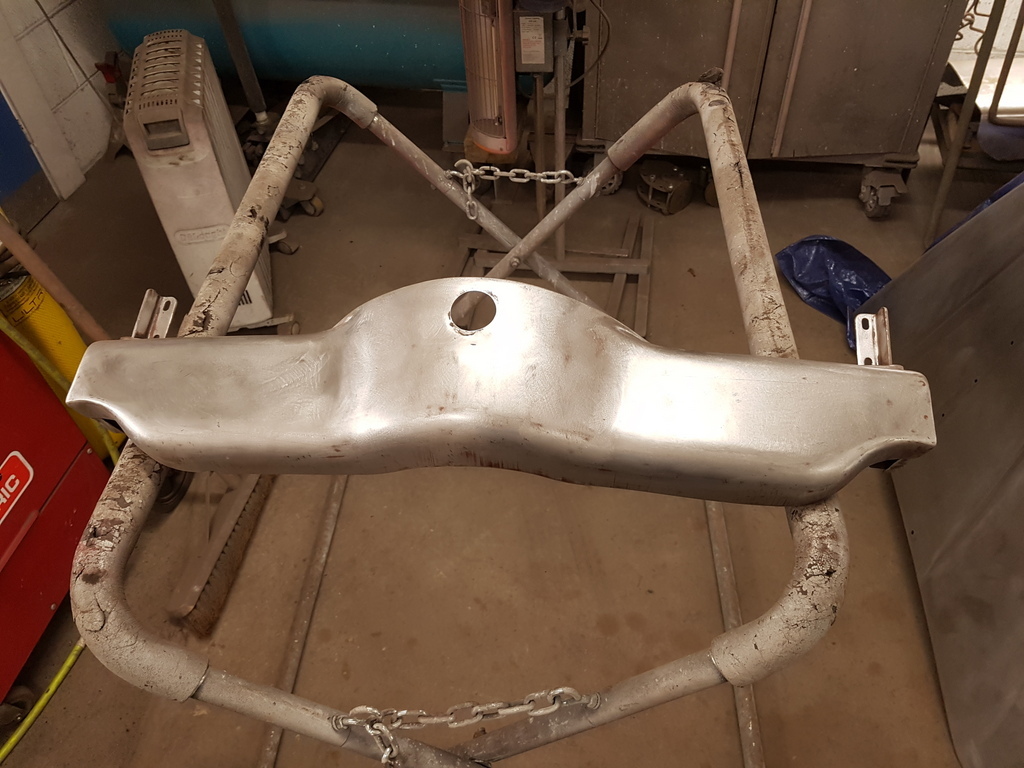 Some time later  Split to the flange required welding up 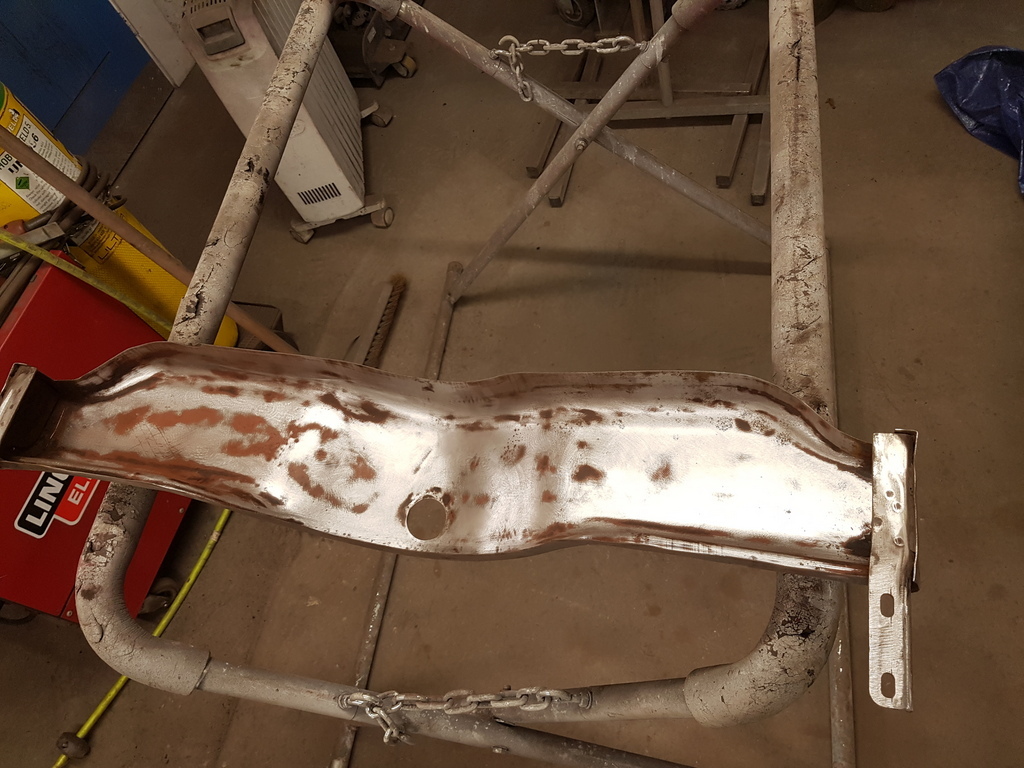 The rear of the panel was also scruffy hence that was also cleaned up + Hydrate 80 applied where required 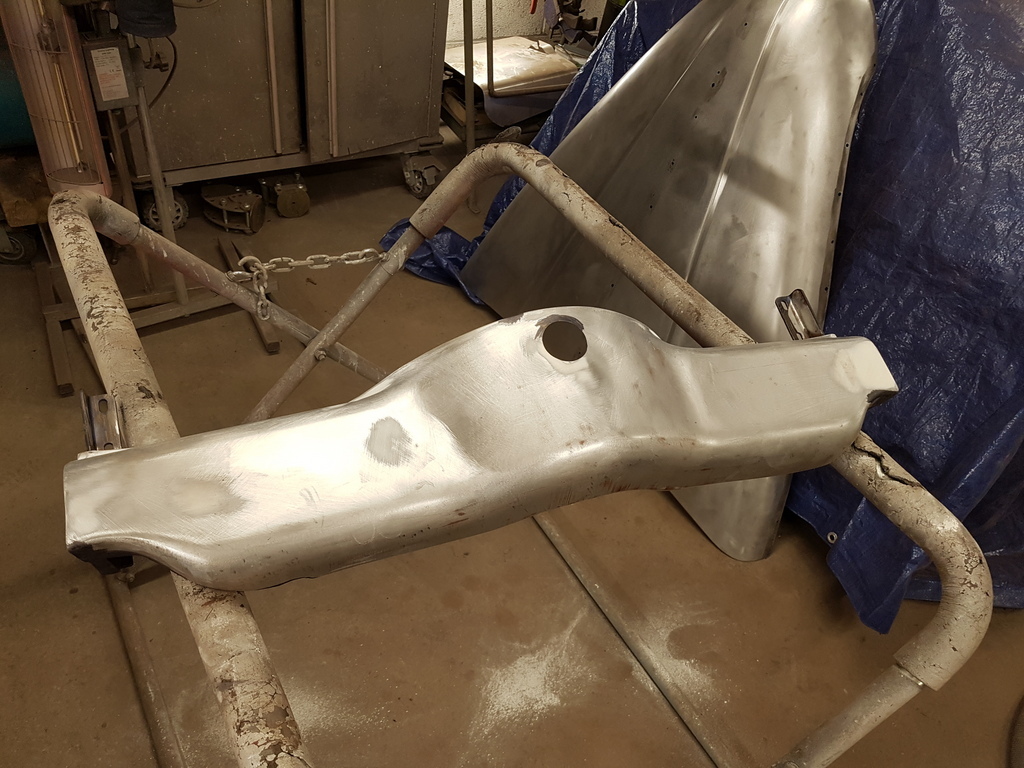 Then profiled the front face of the panel up - and that is the final panel sorted prior to primer 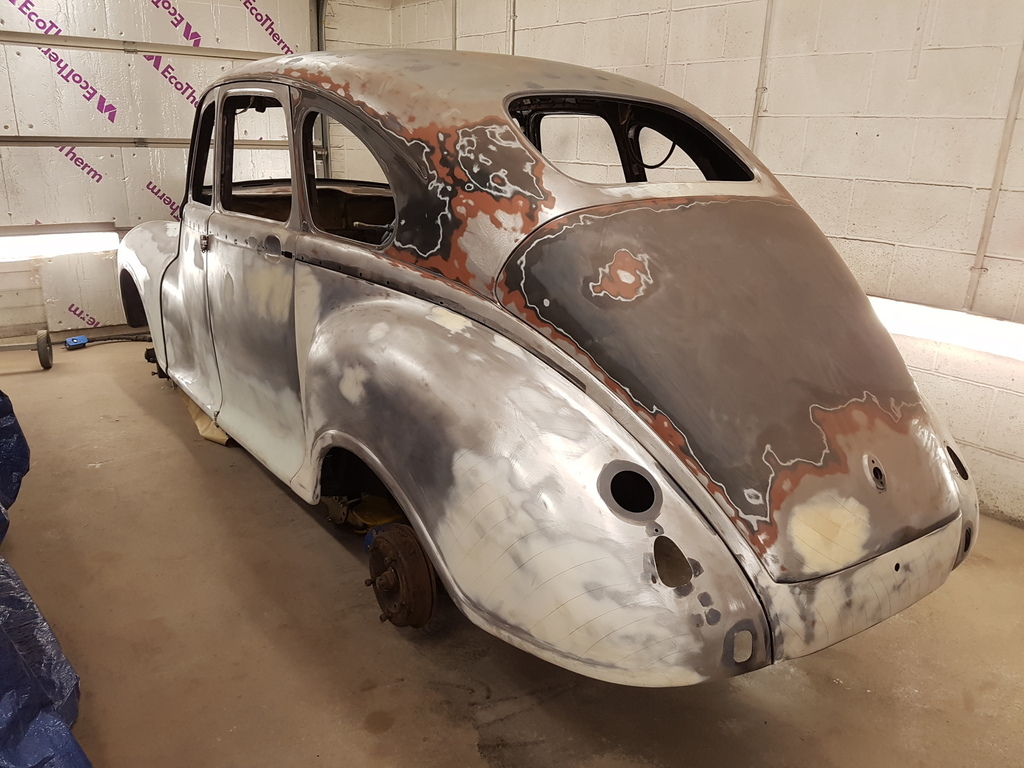 Removed the wheels to allow access under the wheelarch's and to allow the car to be lowered on the lift 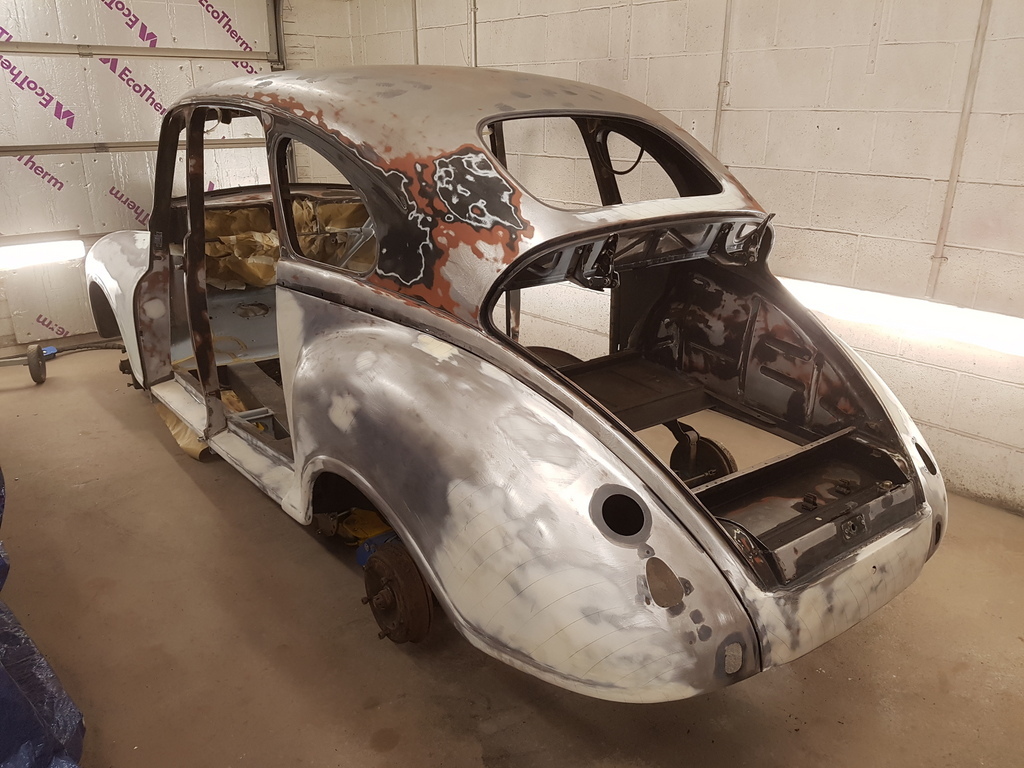 All 4 doors & the boot removed 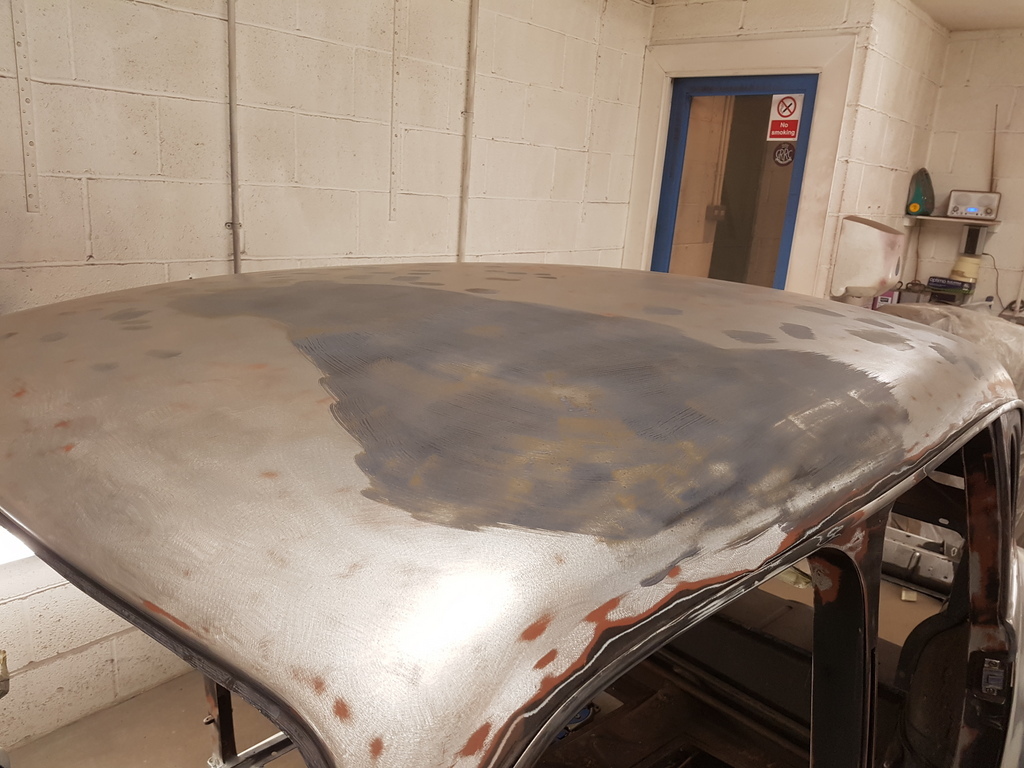 Quick DA over the Hydrate 80 on the roof skin in order to key it ready for the primer 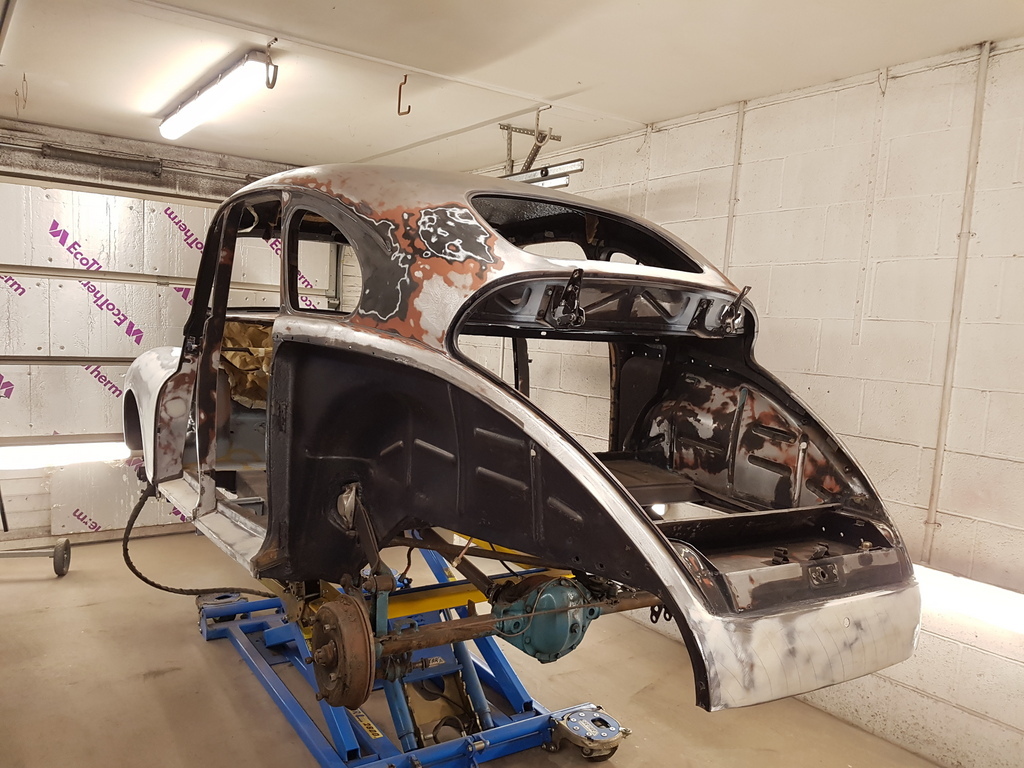 Then up on the lift to access the rear wing bolts & remove the wings 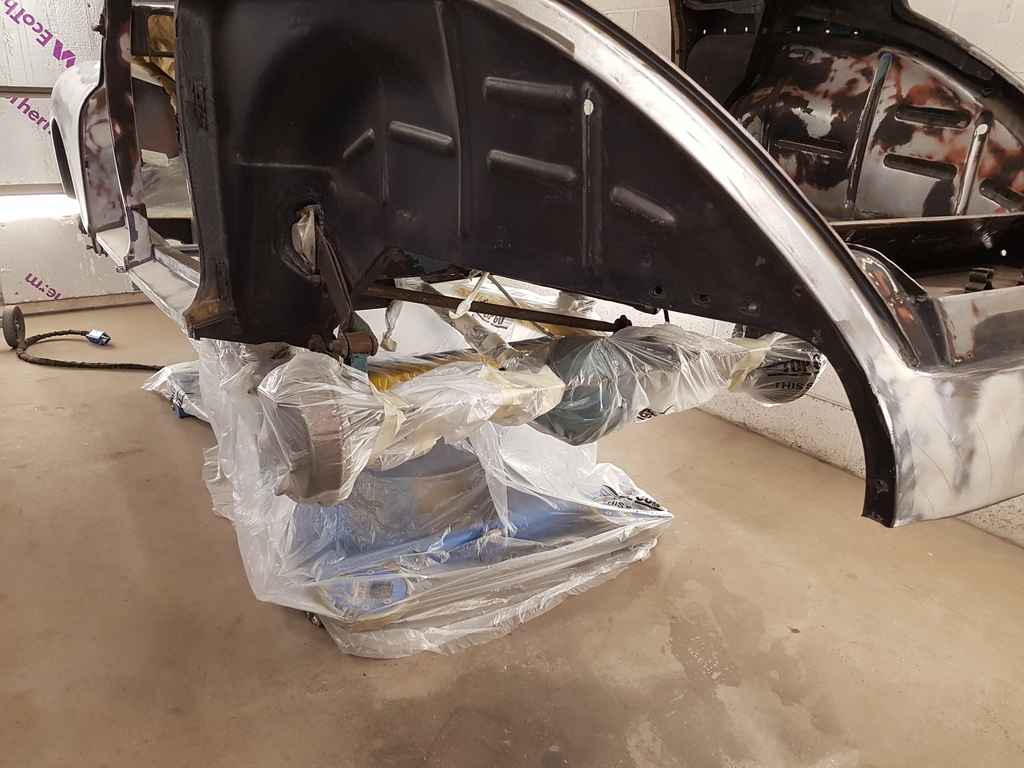 Next is to sort the masking up - not just the car but also the lift 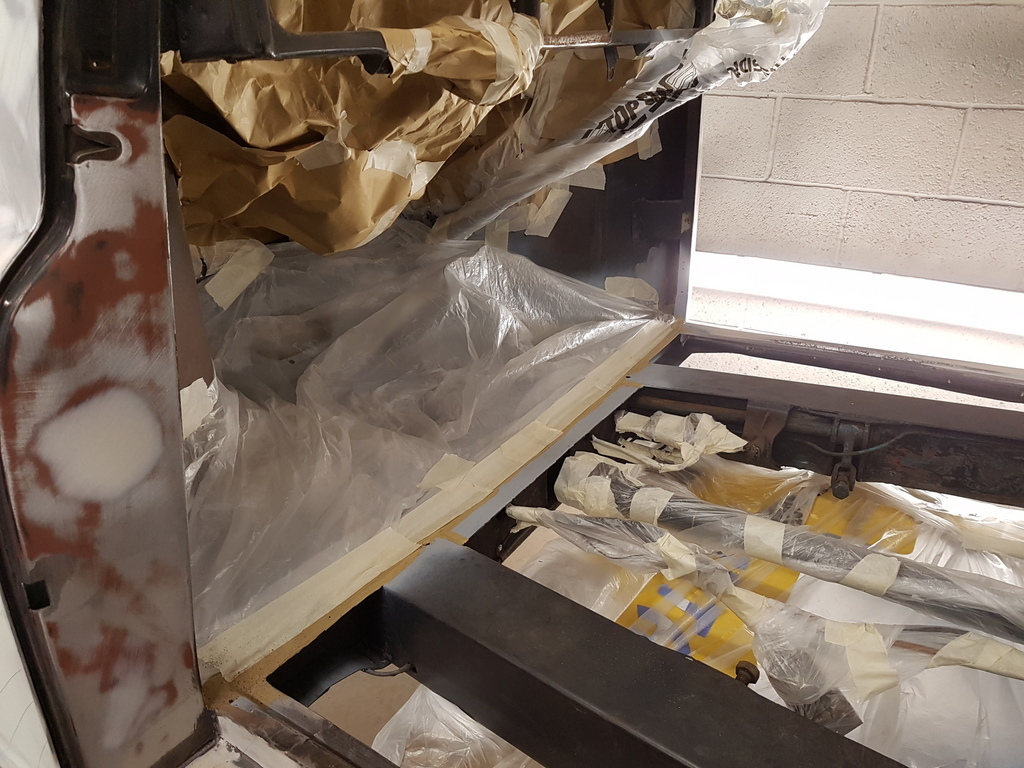 Always check the compatibility of the paint products that you intend to use - I'm using a polyester primer (a dense spraying filler for wants of a better expression) and it does not work well with etching primers which is what is on the front floor pan - which is why its now masked up 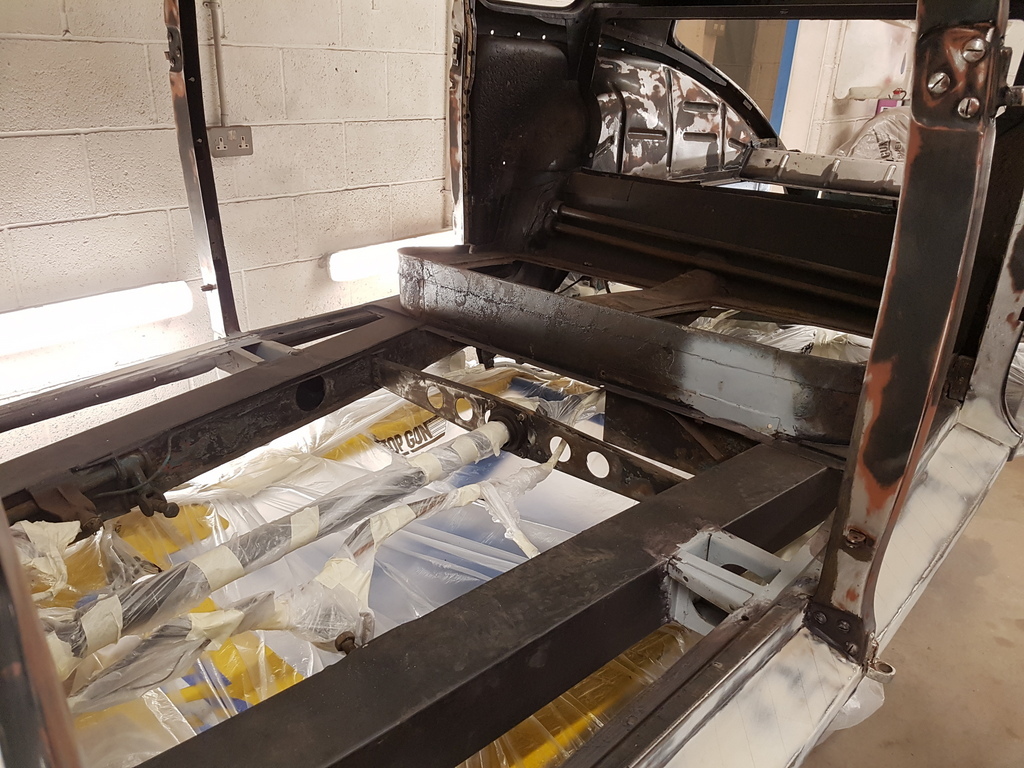 Just a few areas of minor prep in the morning + the door keeps on the pillars to remove 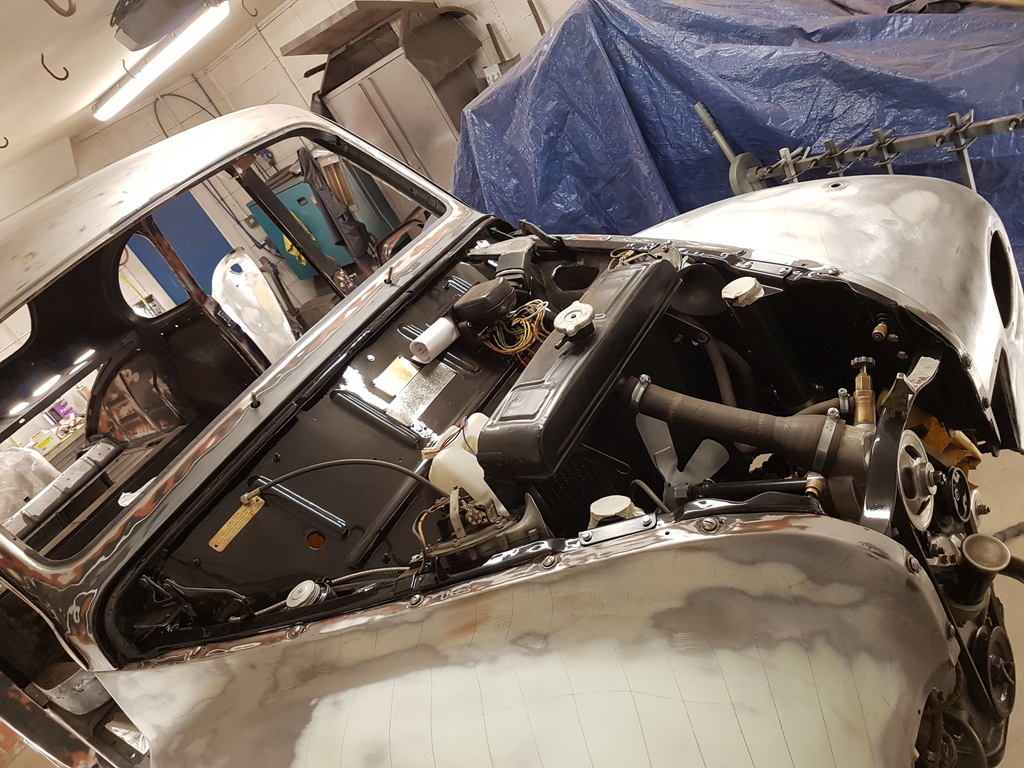 Plus the engine bay to mask up and then we are on target for applying the primer  |
| |
Last Edit: Jan 2, 2020 20:44:38 GMT by Deleted
|
|
|
|
|
|
|
|
Question Chris, looking at the rear bootlid where you have only partially stripped it - does the join betweem them not show up as a witness line after paint?
I have had this in the past - but then I've only used epoxy primer and I've never used filler primer.
|
| |
|
|
|
|
|
|
|
Question Chris, looking at the rear bootlid where you have only partially stripped it - does the join betweem them not show up as a witness line after paint? I have had this in the past - but then I've only used epoxy primer and I've never used filler primer. Mark - Providing that the existing paint is feather edged back properly and the polyester that goes over the top of it is sanded back correctly you wont see previous repair / witness areas through the fresh paint |
| |
|
|
|
|
|
|
|
|
getting excited to see that primer go on. This must be a time when tempering excitement can be difficult. looking very very good, Grumpy!
JP
|
| |
I know its spelled Norman Luxury Yacht, but its pronounced Throat Wobbler Mangrove!
|
|
|
|
|
|
|
getting excited to see that primer go on. This must be a time when tempering excitement can be difficult. looking very very good, Grumpy! JP JP - It all happens quite quickly from this point - Once the primer is on, cured & flatted back the paint goes on and you can start see the results all within a matter of a few days - a little polish and things can be started to be bolted back on - the trick is to have the parts prepared / in stock & ready to go back on otherwise it becomes a real pain having to clean other parts up - prime then paint them - this not only leads to the job dragging on but there is good possibility that you end up creating more work than you need to - you have a car that is in fresh paint & shiny whilst at the other side of the workshop you are removing rust from brackets & painting them whilst attempting to avoid damage to the paint on the car - backwards thinking & working is something that I would rather avoid hence it always pays to plan ahead  (and after all these years I still sometimes miserably fail) |
| |
Last Edit: Jan 3, 2020 8:15:44 GMT by Deleted
|
|
|
|
|
|
|
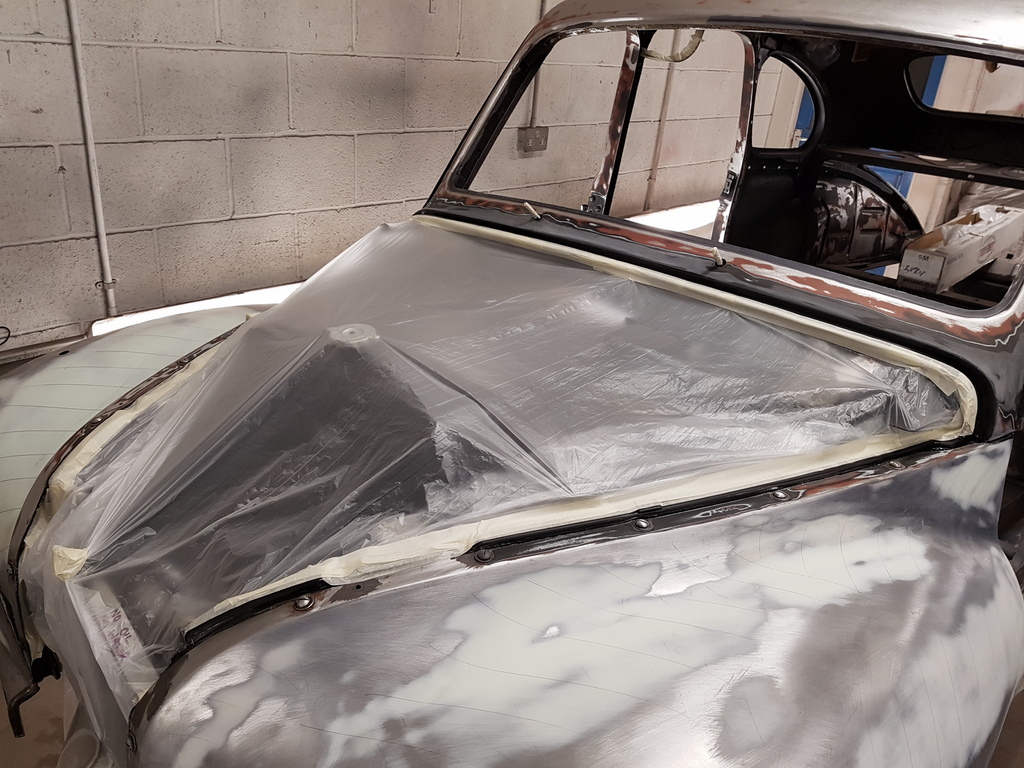 Completed the masking up on the front of the car 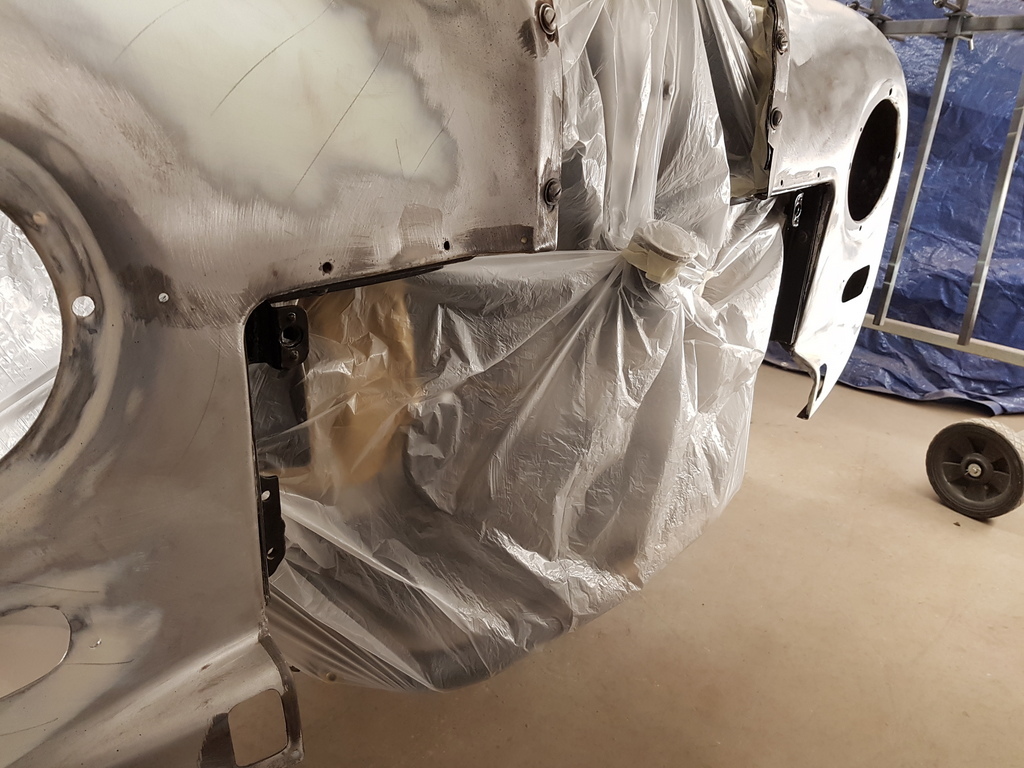 Poor / clumsy masking can ruin a paint job - has can overspray over everything - its always better to take your time and do it properly - don't use cheap masking tape it will let you down and don't leave your masking loose so that it flaps around and potentially catches the paint when wet  I then needed to create some space so this vintage Jowett which is with me for a new hood was run down the lane and into my neighbours garage for the day 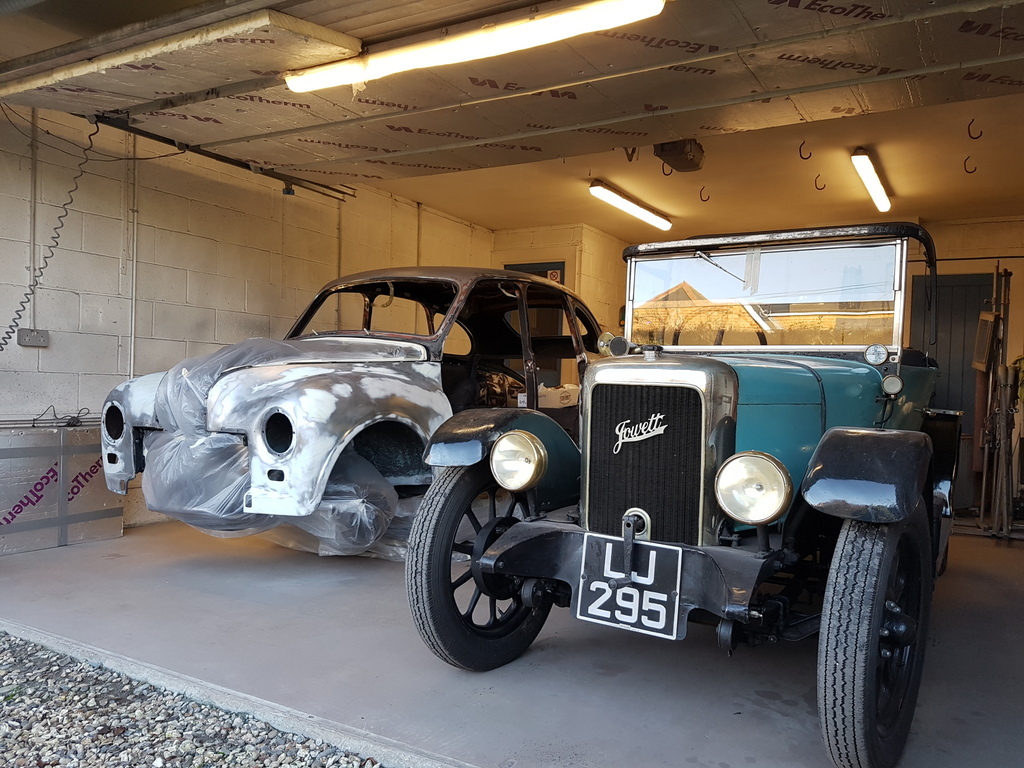 The doors were hung to the stands - this allows me to paint both sides 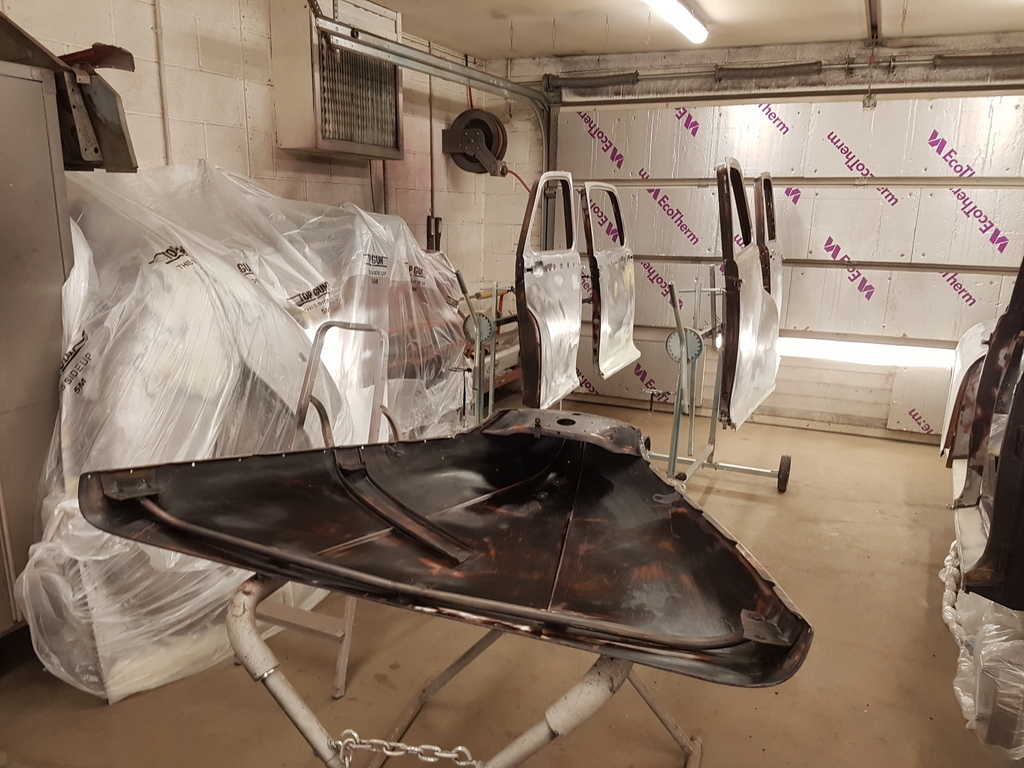 Just had room for the underside of the bonnet to go in to primer 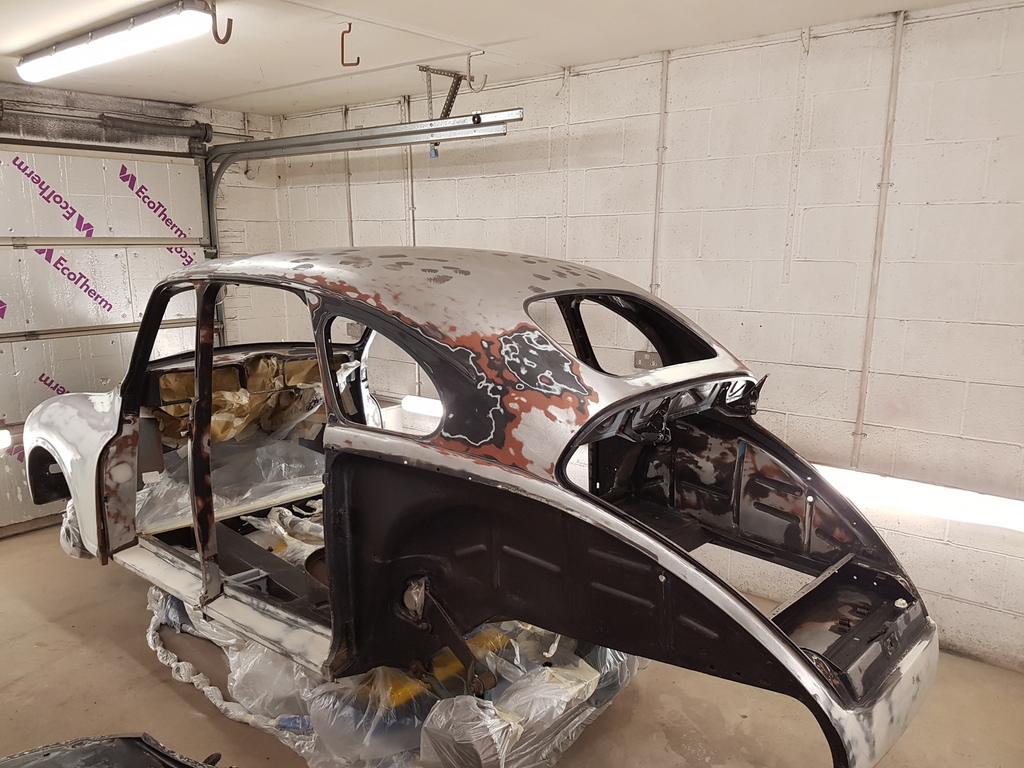 One of the steps that needs to be undertaken prior to applying primer all too often gets missed by many - that step is ensure what you are priming is free of any contamination hence everything receiving the primer needs a wipe over with a solvent based panel wipe - its irrelevant of how shiny & good your final paint looks - if you have failed to undertake the correct preparation prior to applying the primer then at some stage the paint is going become detached / defective 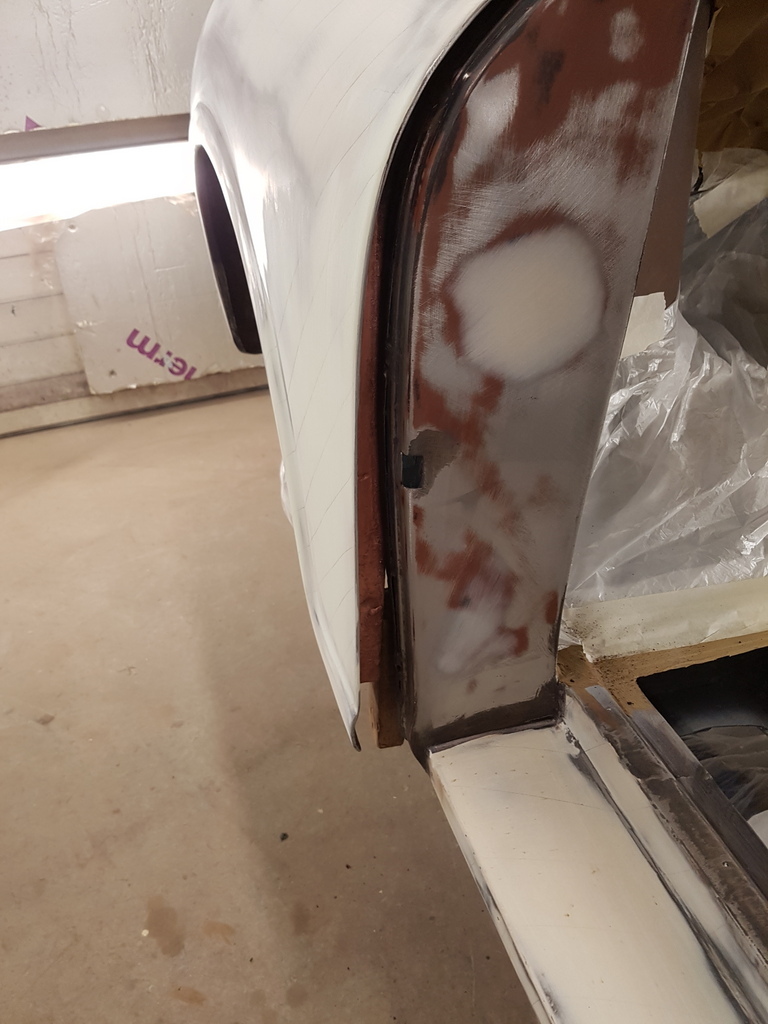 I placed a spacer to keep the rear edge of the front wings open to allow paint to go behind the flange edges 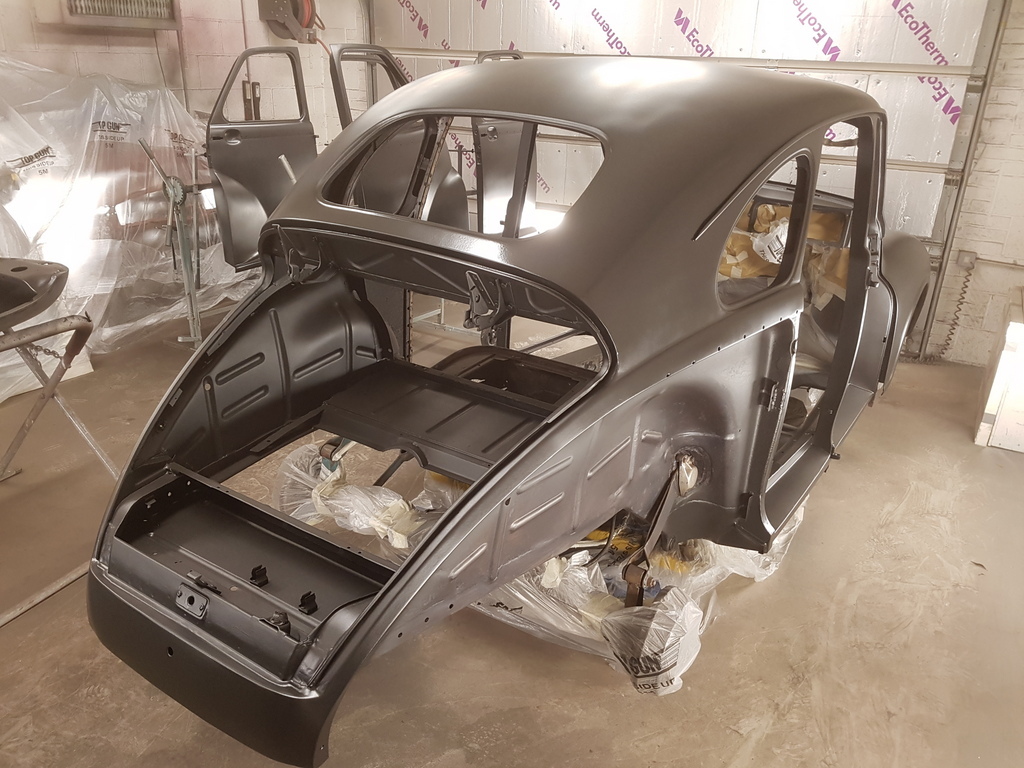 Then on with the primer  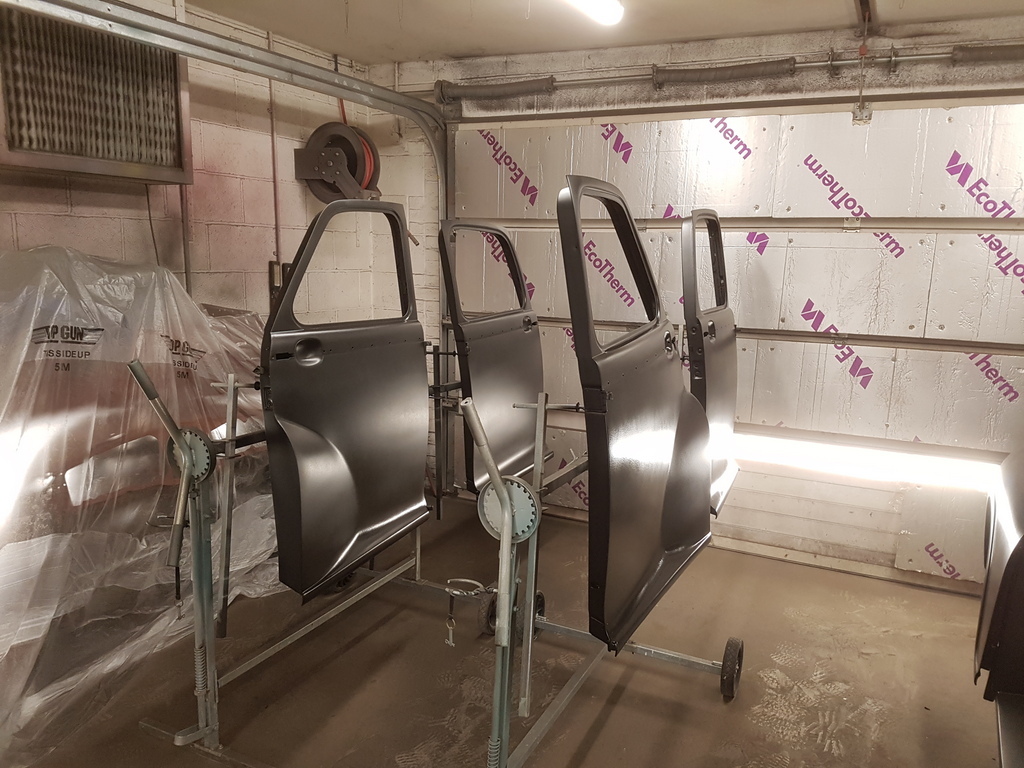 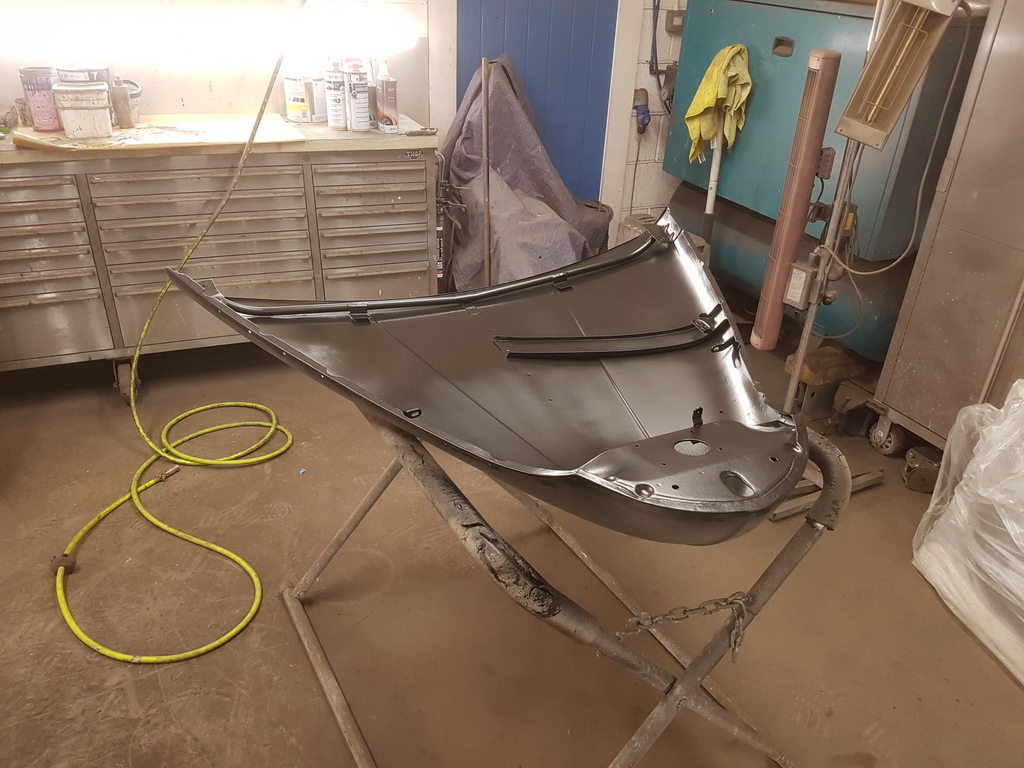 Then just had to shuffle everything back up at the end of the day in order to put the vintage back into the workshop 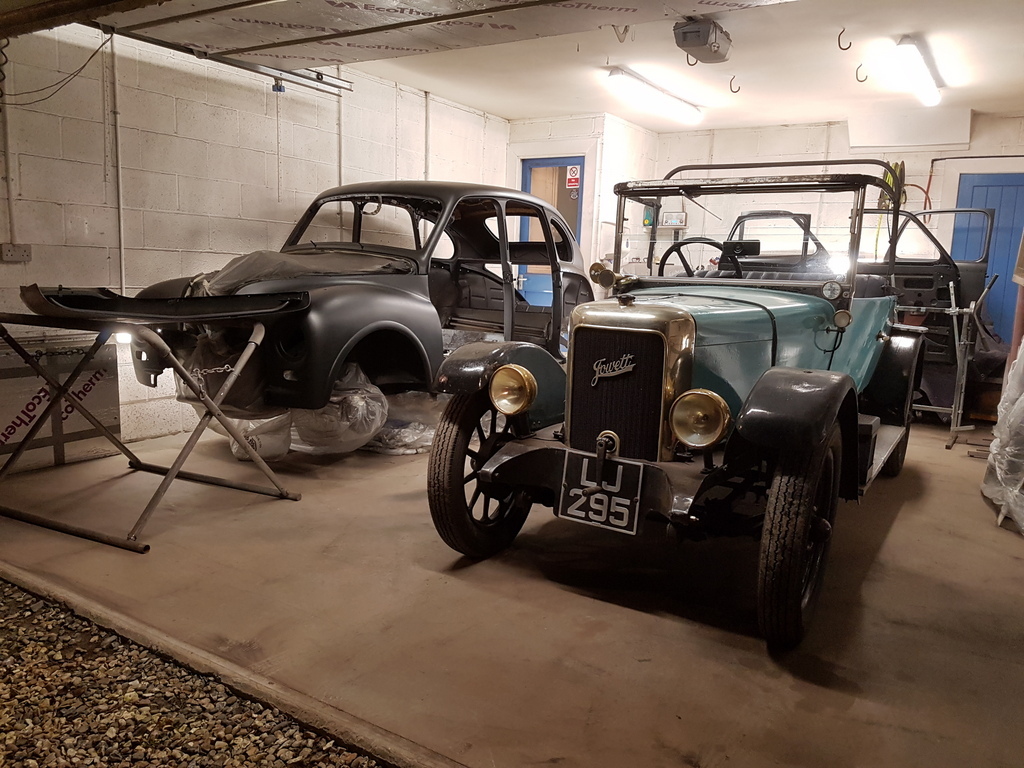 The remaining panels will primed in a second batch that will completed over the next few days |
| |
Last Edit: Jan 3, 2020 19:30:05 GMT by Deleted
|
|
|
|
|
|
|
Nice in satin black - does this mean it will be a 'rat rod' look  I remember from doing mine, 4 hours one evening to mask it all up and 20 minutes the next evening to paint it. |
| |
|
|
|
|
|
|
|
|
|
|
|
|
Of course I am impressed
Looking good.
|
| |
|
|
|
|
|
|
|
|
Some excellent work there! What is the temperature in your workshop during painting? Or what is the minimum temperature for doing a paint job?
Peter
|
| |
|
|
jpsmit
Posted a lot
  
Posts: 1,274
|
|
|
|
|
amazing - looks like it might have at the factory
|
| |
|
|
|
|
|
|
|
Some excellent work there! What is the temperature in your workshop during painting? Or what is the minimum temperature for doing a paint job? Peter Peter - I don't really worry about the temperature too much when applying the paint has the extractor fan is constantly drawing colder air through the workshop to remove the mist & fumes - however once applied I like to get the temperature in there above 15c for the first few hours - I have a oil filled radiator and that copes very well at maintaining an ambient temperature in what is not a huge amount of space - this time of year I can leave that on a low setting and it will just trip in on its thermostat - its currently 13c in there whilst its 3c outside - NOTE most automotive paints will not cure in temperatures of sub 5c regardless of if they are 2 pack or not |
| |
|
|
|
|
|
|
|
Some excellent work there! What is the temperature in your workshop during painting? Or what is the minimum temperature for doing a paint job? Peter Peter - I don't really worry about the temperature too much when applying the paint has the extractor fan is constantly drawing colder air through the workshop to remove the mist & fumes - however once applied I like to get the temperature in there above 15c for the first few hours - I have a oil filled radiator and that copes very well at maintaining an ambient temperature in what is not a huge amount of space - this time of year I can leave that on a low setting and it will just trip in on its thermostat - its currently 13c in there whilst its 3c outside - NOTE most automotive paints will not cure in temperatures of sub 5c regardless of if they are 2 pack or not Thanks for the answer Chris. I had a discussion with a friend about the temperature. He stated it should be 20deg during painting. I was a bit lazy this week and needed to spray 1 steering wheel and did not want to put the 2 cars and 3 motorbikes outside so spraypainted it outside where it was about 10deg. Had put the paint on the radiator to warm up and warmed up the steering wheel and between paint stages put it in front of the heater. The result looks good and the steering wheel is mine so no problems if it go s wrong. My friend is worried about paint blistering due to moisture ingress Keep up the good work Peter
|
| |
|
|
|
|
|
|
|
Peter - I don't really worry about the temperature too much when applying the paint has the extractor fan is constantly drawing colder air through the workshop to remove the mist & fumes - however once applied I like to get the temperature in there above 15c for the first few hours - I have a oil filled radiator and that copes very well at maintaining an ambient temperature in what is not a huge amount of space - this time of year I can leave that on a low setting and it will just trip in on its thermostat - its currently 13c in there whilst its 3c outside - NOTE most automotive paints will not cure in temperatures of sub 5c regardless of if they are 2 pack or not Thanks for the answer Chris. I had a discussion with a friend about the temperature. He stated it should be 20deg during painting. I was a bit lazy this week and needed to spray 1 steering wheel and did not want to put the 2 cars and 3 motorbikes outside so spraypainted it outside where it was about 10deg. Had put the paint on the radiator to warm up and warmed up the steering wheel and between paint stages put it in front of the heater. The result looks good and the steering wheel is mine so no problems if it go s wrong. My friend is worried about paint blistering due to moisture ingress Keep up the good work Peter
Peter - Taking the measures that you have I would not foresee any problems - getting and maintaining workshop temp above 20c throughout the year will be very difficult (dependant upon location in the world) & the workshop equipment such has a heated paint booth - but providing you have a reasonable ambient / background temperature within a dry workshop with a sensible air flow then you should not have a problem |
| |
|
|
|
|
|
|
|
|
Its good to see this in one colour at last even if it is only primer! Is the top coat going to be anything special or just a straight black?
|
| |
|
|
|
|
|
|
|
I think you will find that black is the most special paint possible  |
| |
|
|
|
|
|
|
|
|
Is there any reason to use black primer on a black car Chris?
|
| |
|
|
|
|
|
|
|
Is there any reason to use black primer on a black car Chris? I would imagine it makes the painting a bit easier, and also means using less paint to delete the grey/gray (of course I don’t have a clue) Quoted “” Hawley’s Paints has been in business for more than 100 years. Our automotive paint is used by many commercial auto body repair shops, as well as individual customers who are doing their own paint jobs.
We have all the specialized accessories like spray guns and detailing products you will need to do a good paint job. We have the expertise to match the primer to your top coat of paint to get the effect you want. Some say the primer color does not matter, and it doesn’t if you put enough coats over it, but that can get costly. Matching primer to the color you want will result in having to apply fewer coats.
Primer is a coating that prevents rust and provides a base for the paint you will apply. Primer colors come in black, red, gray, and white.
Black primer is used when you want to paint your car black or a very dark color. This means you don’t have to use as many coats of paint.
While it is true you do cover up the primer with your paint, the primer still impacts how the paint looks once it is dry. Black paint on black primer does result in fewer coats of paint. Using a black primer on other colors makes the paint look deeper and more vibrant.
Gray primer is the most common, and it is more neutral. This means it does not affect the color very much and it could be good for metallic-type paints. It does mute the color just a little, so if you want a very bright finish, you might want something else. That something else will be a white primer, especially if you will be covering it with a lighter shade of paint. It makes the color brighter and it will stand out more.
Red primer is used to smooth out scratches and dents and has less impact on the top coat.
For all of your automotive paint needs from primer to the final coating and all the needed equipment to do the job, call Hawley’s Paints at 707-545-1711. |
| |
Last Edit: Jan 4, 2020 17:57:38 GMT by grizz
|
|
|
|





































